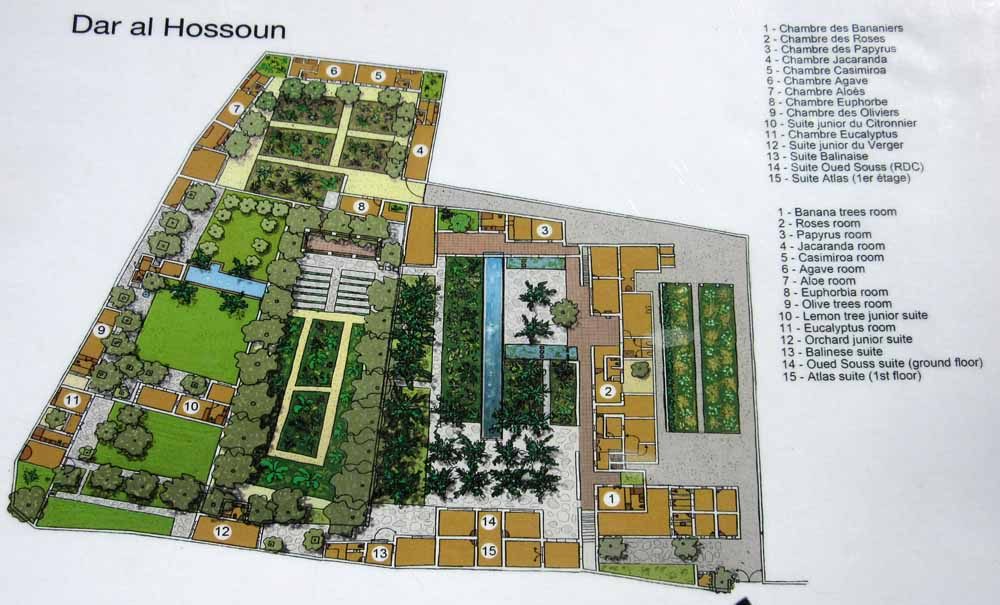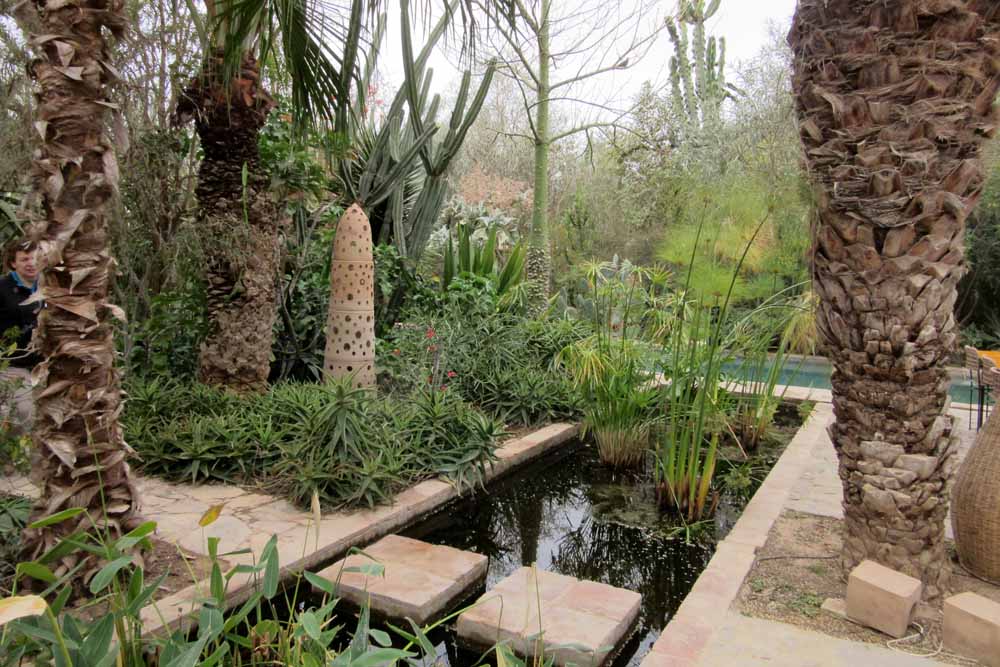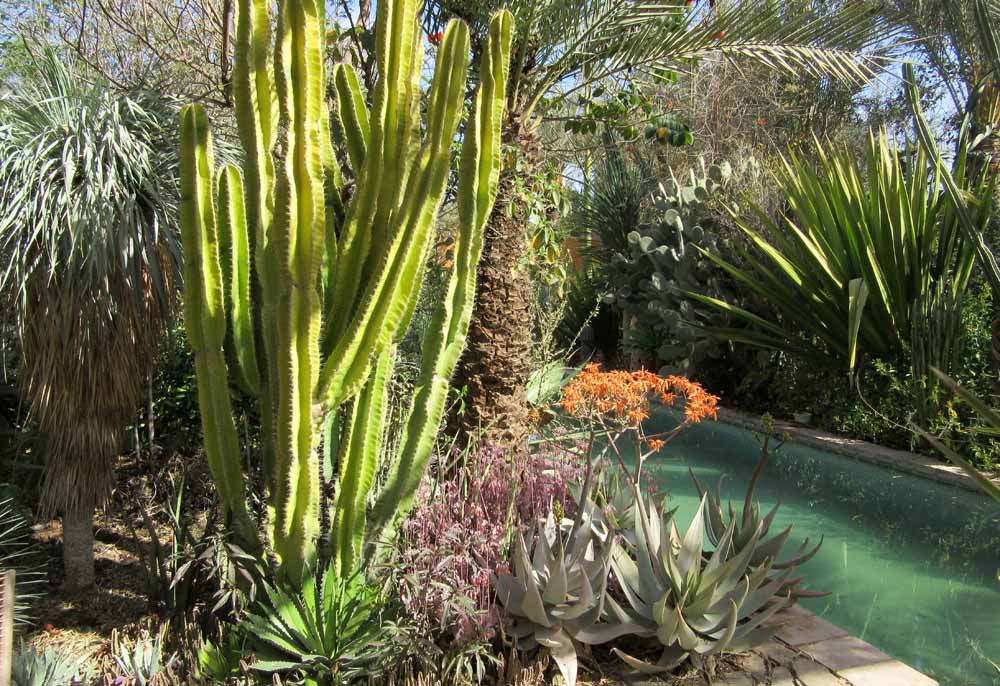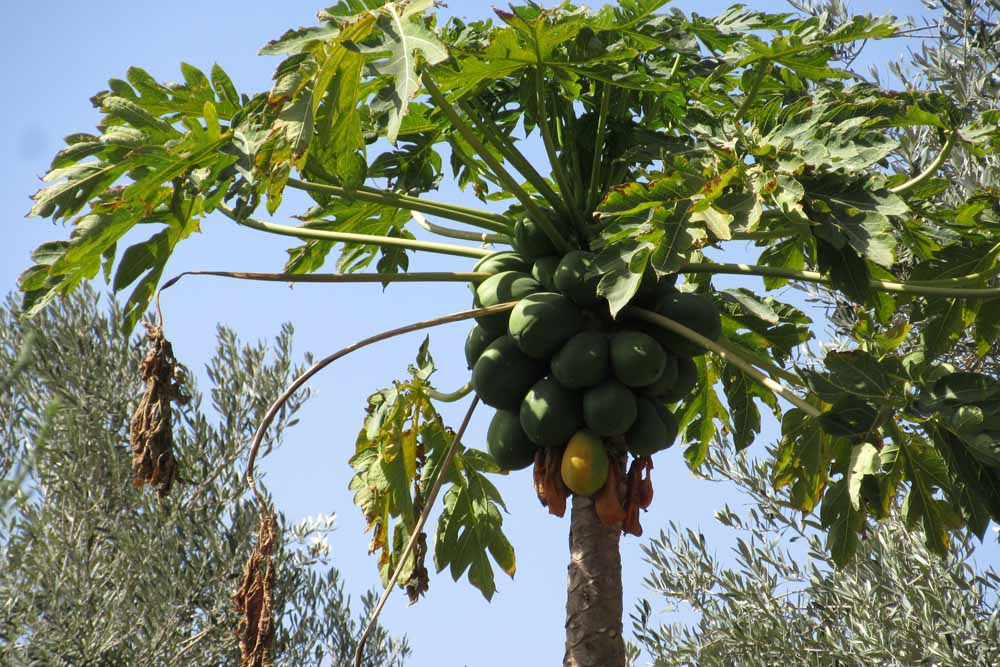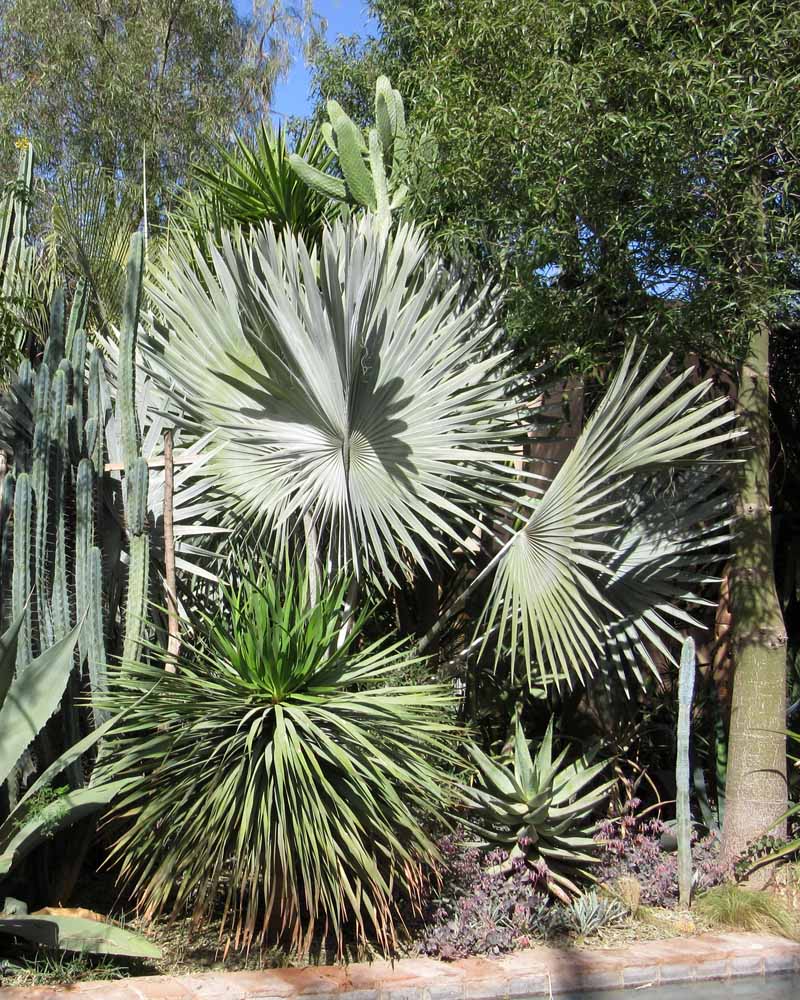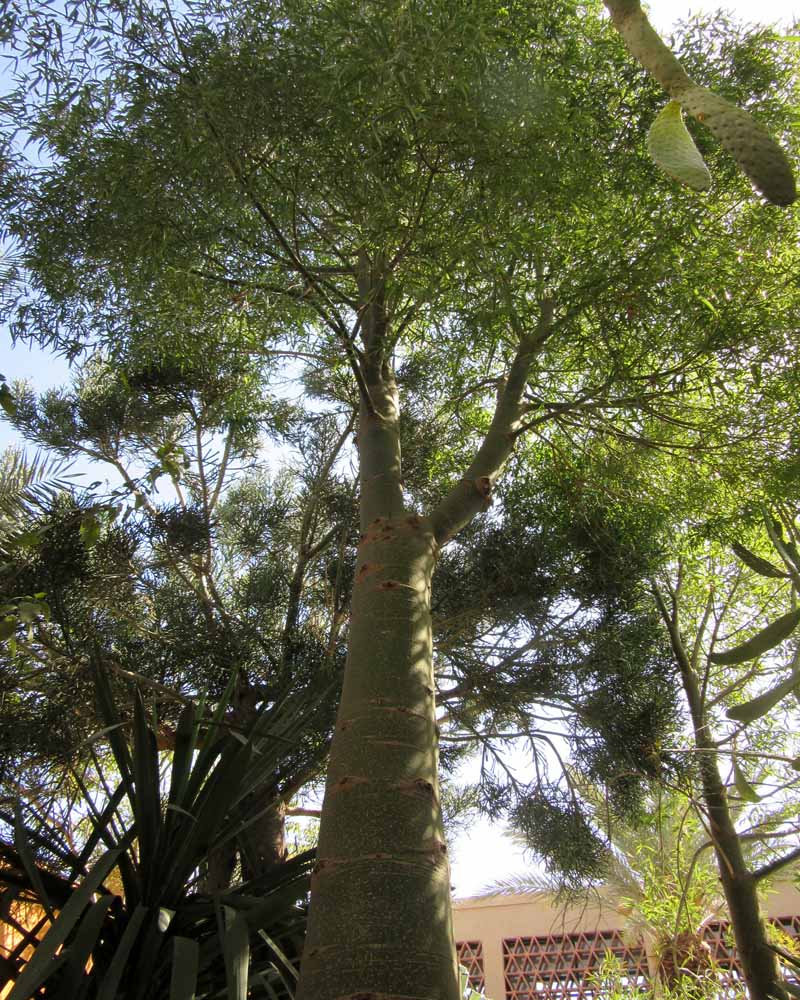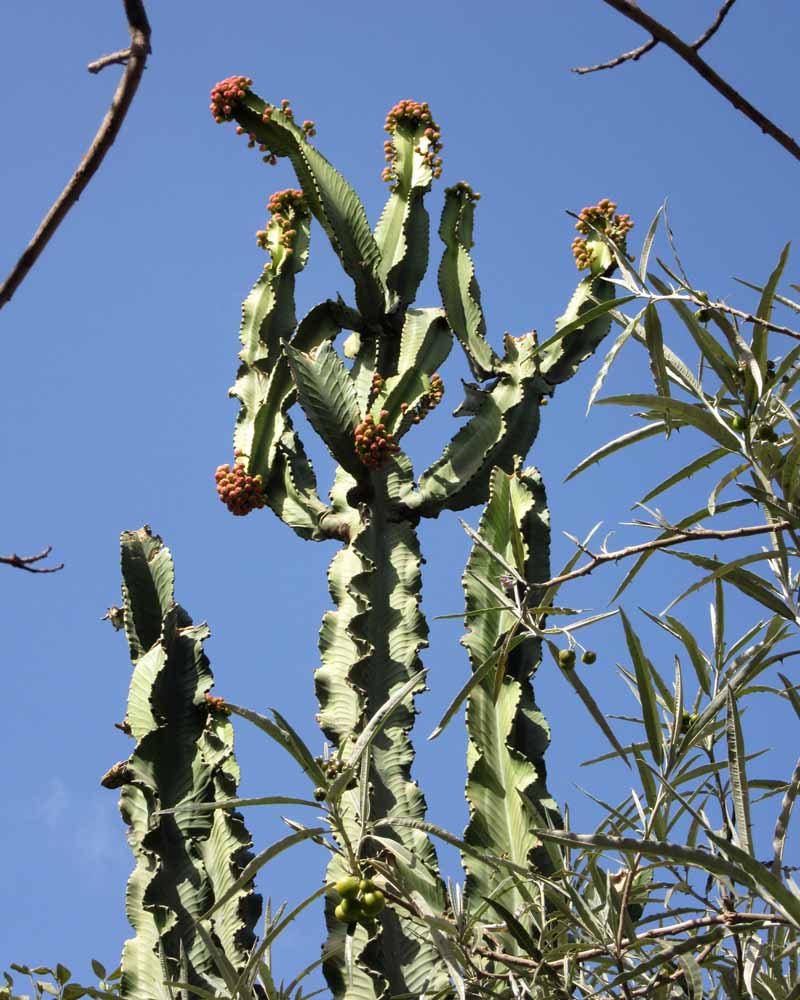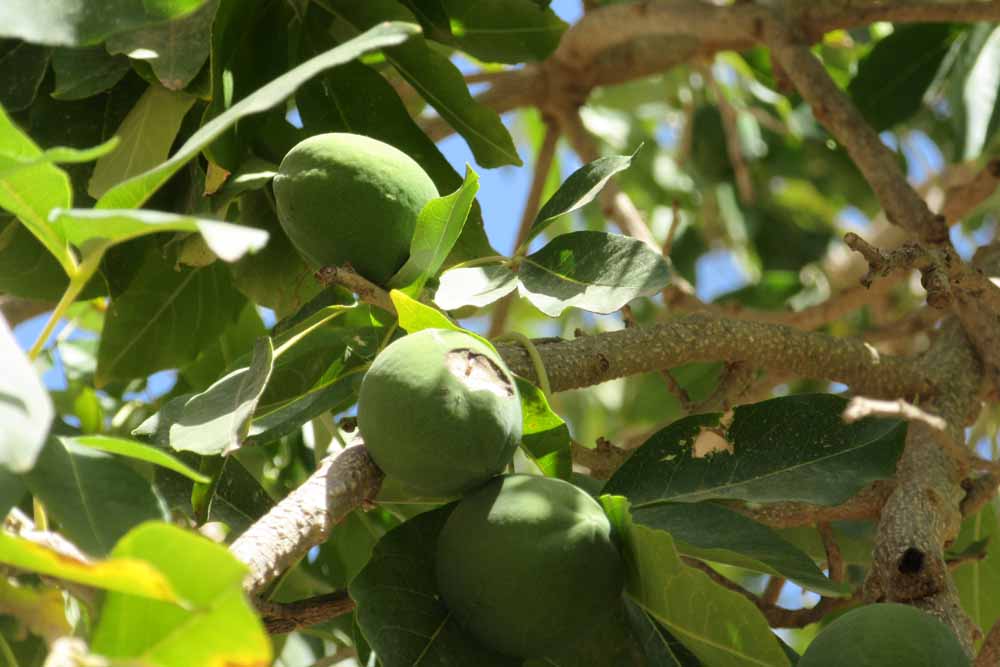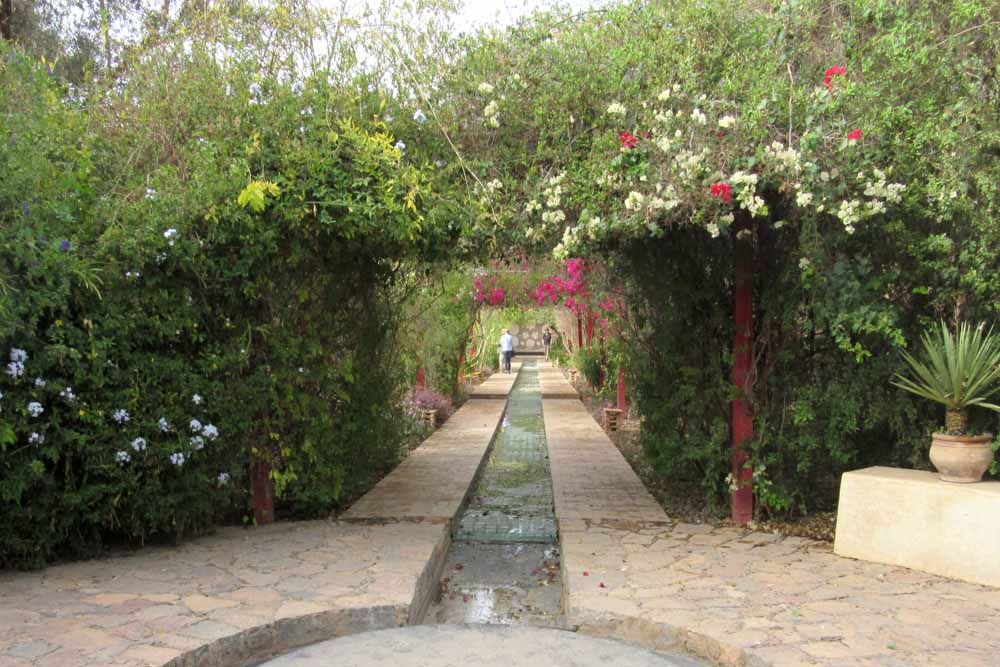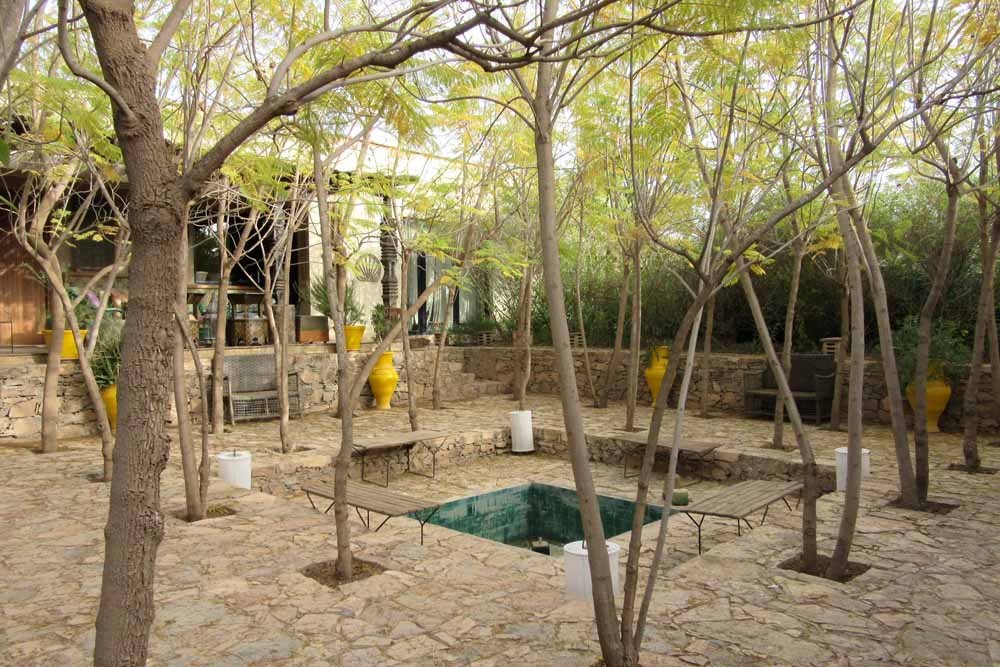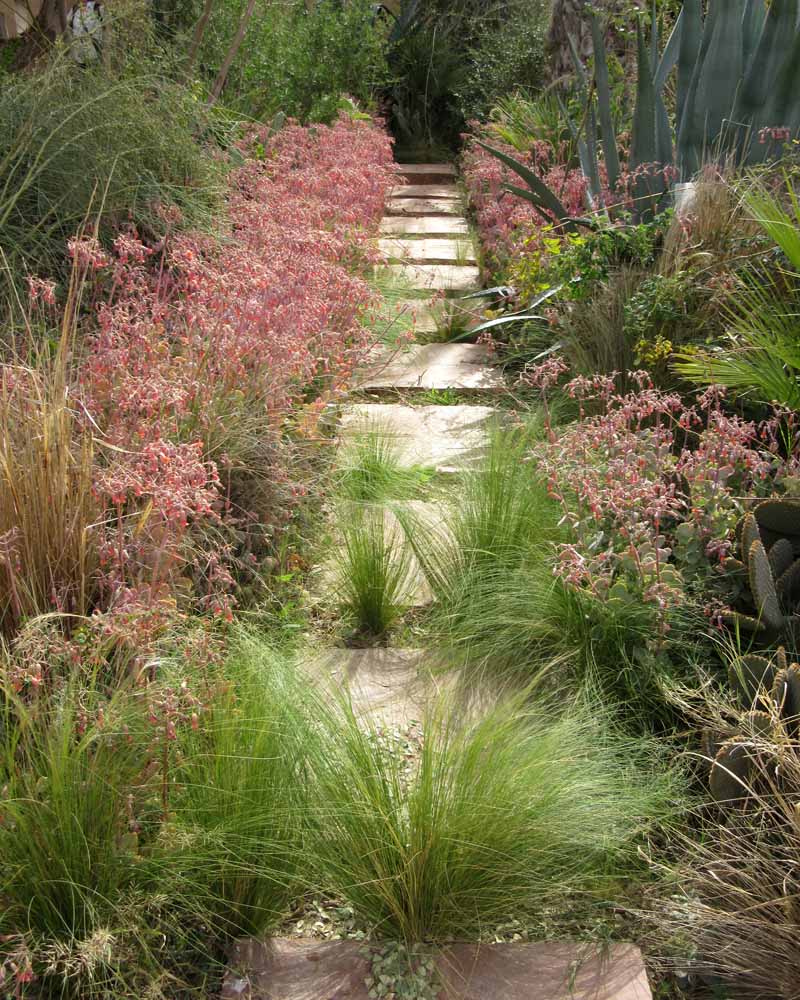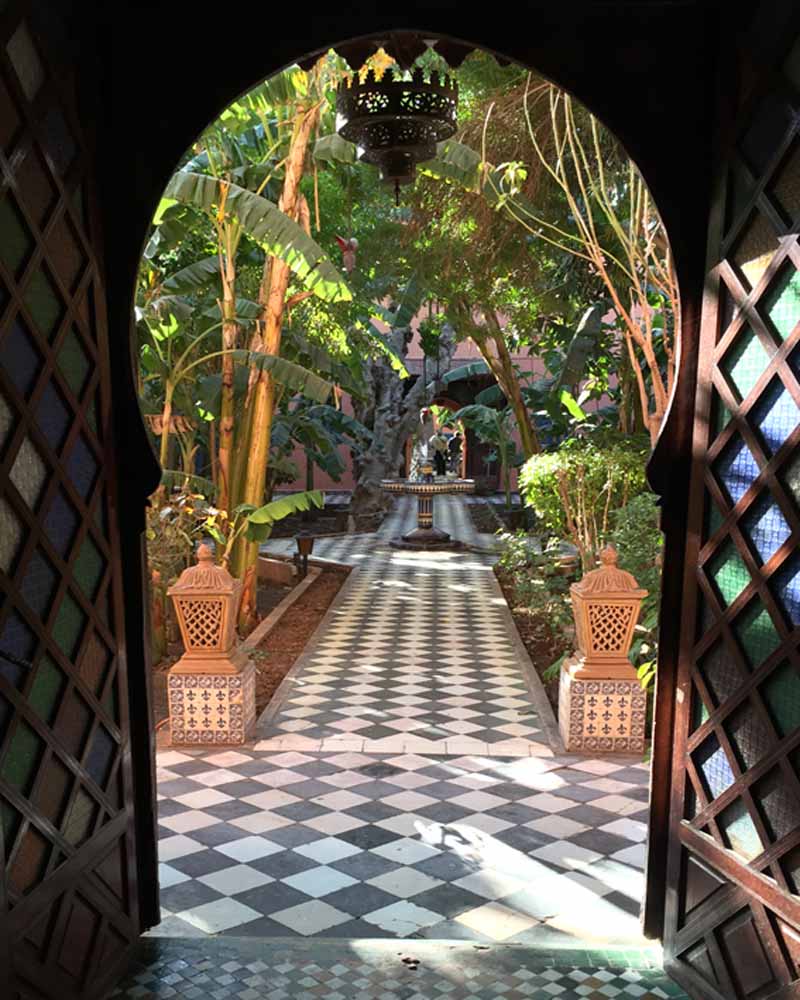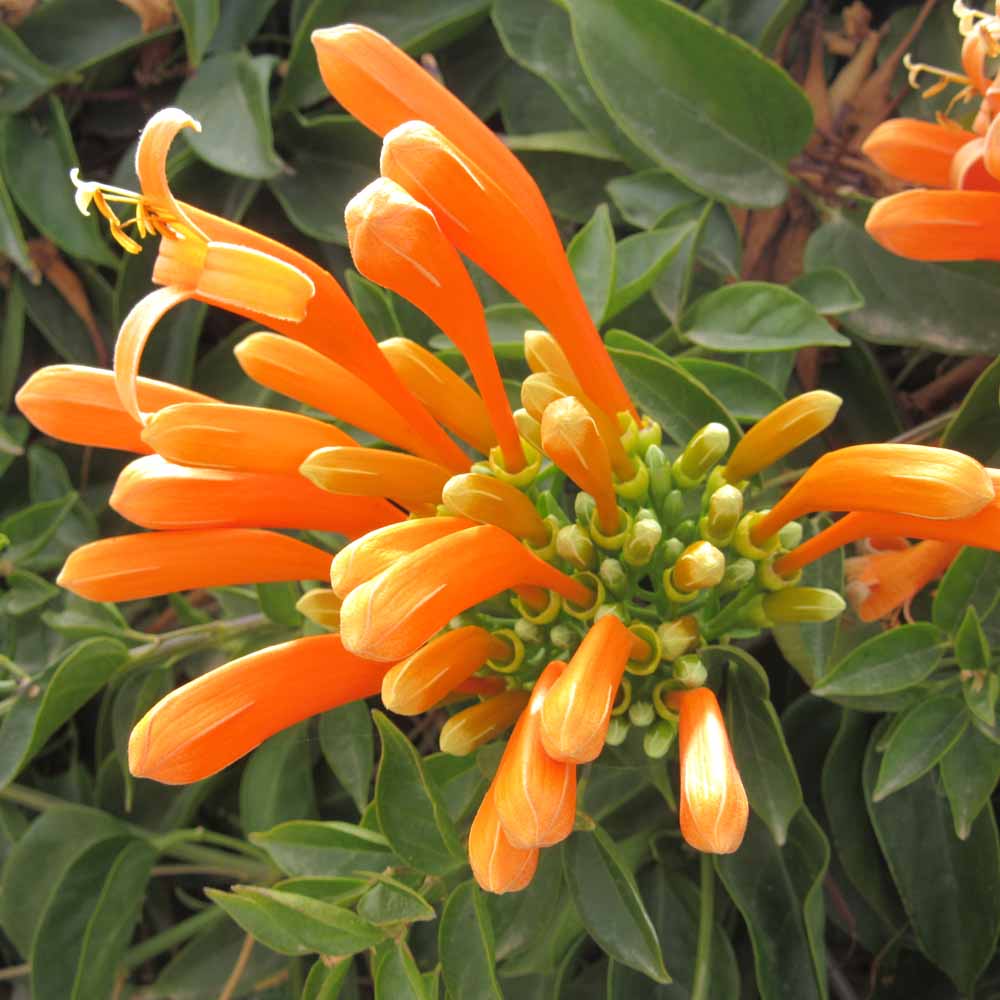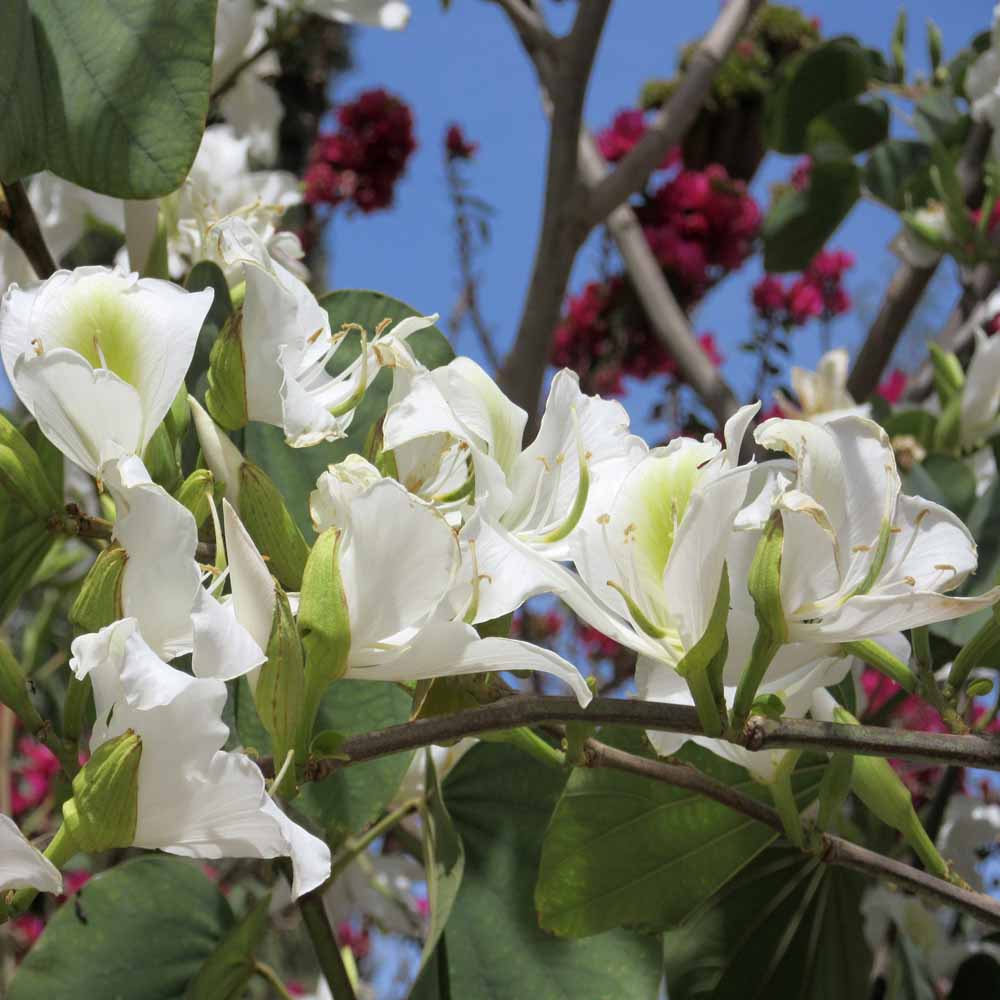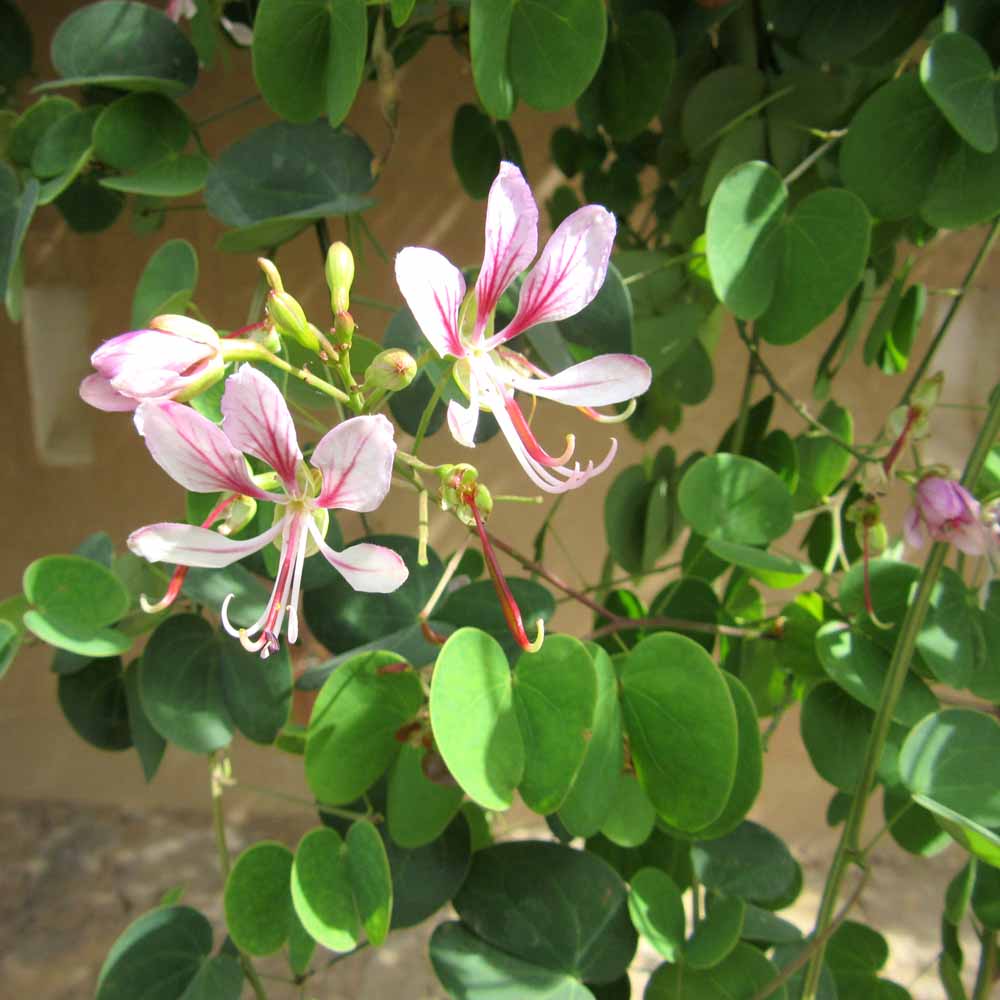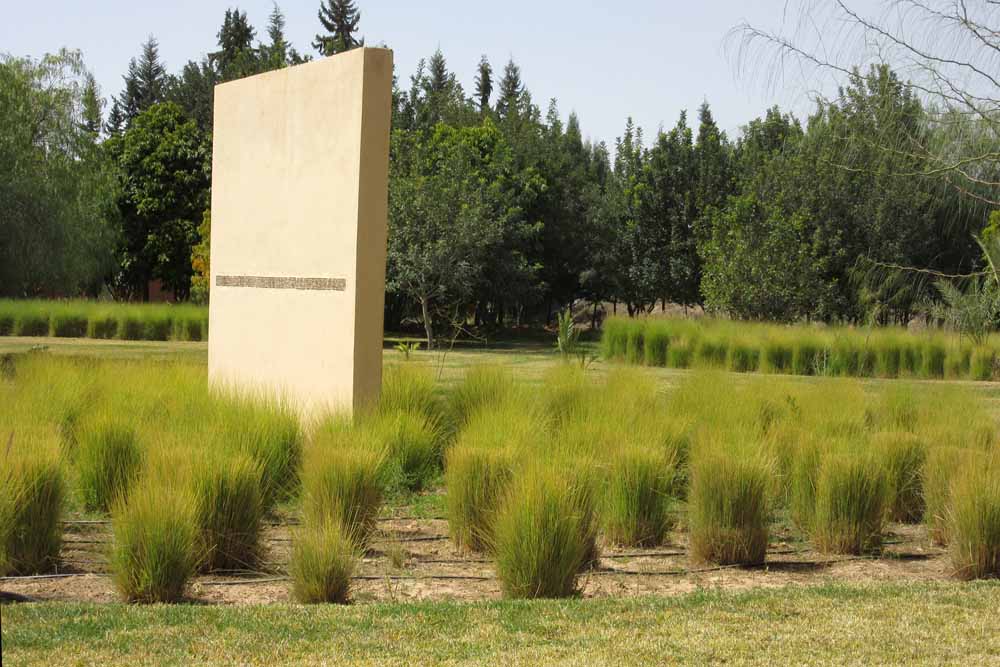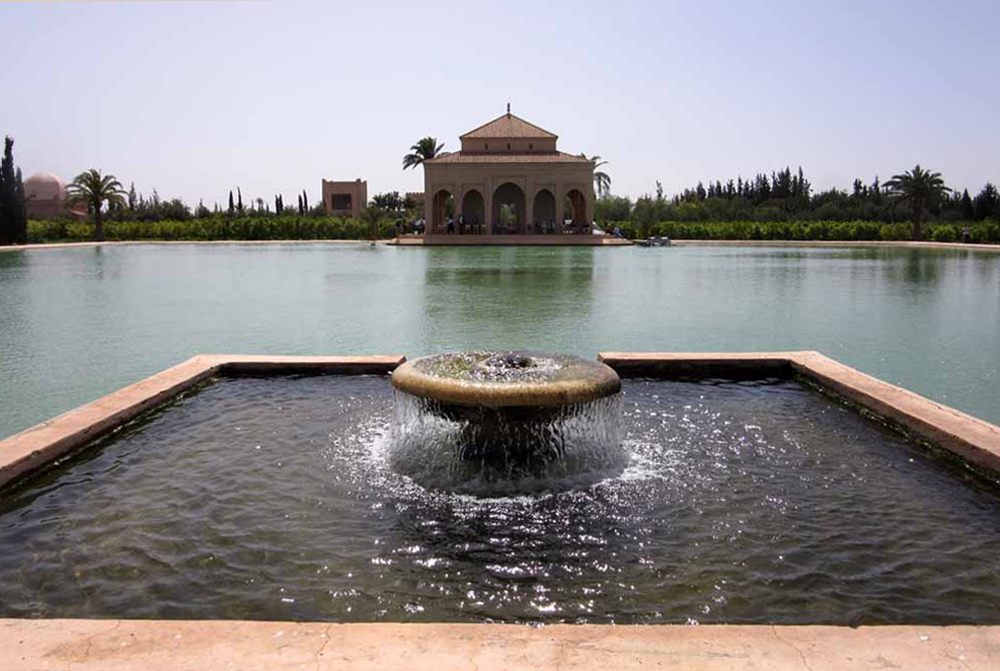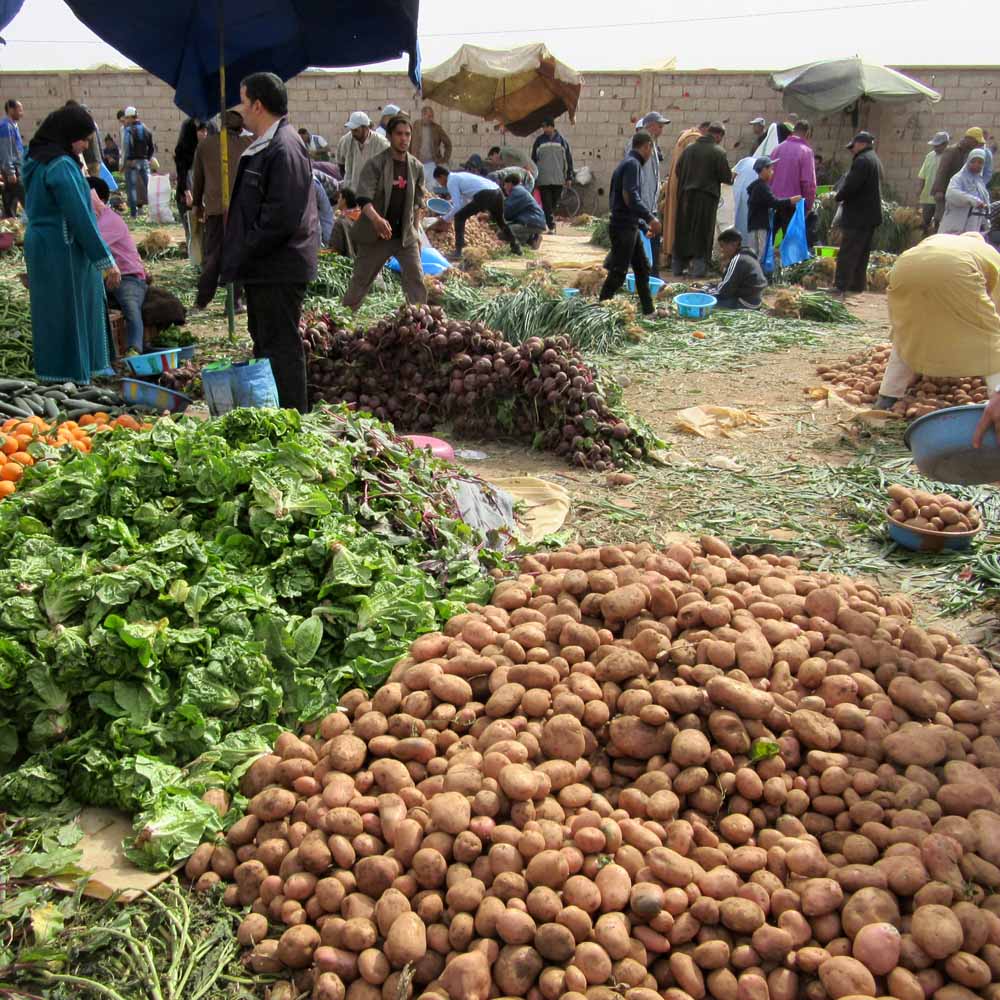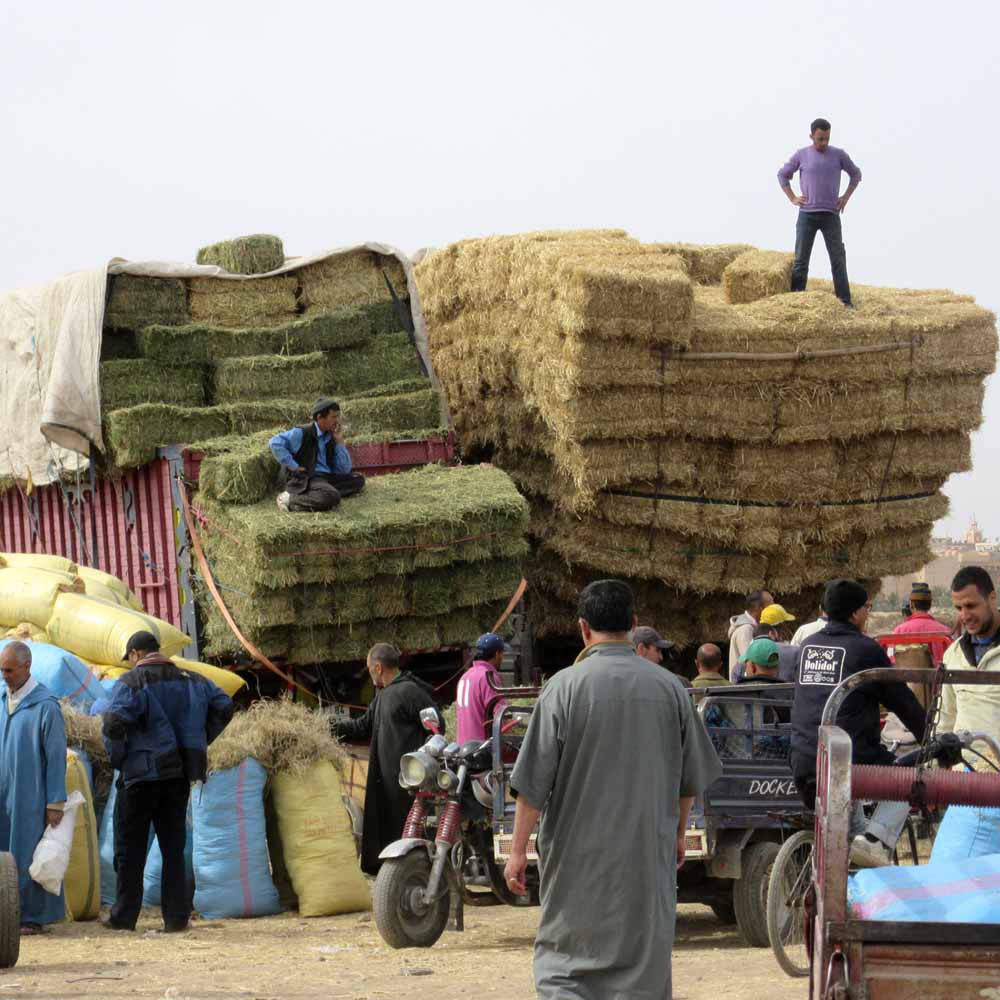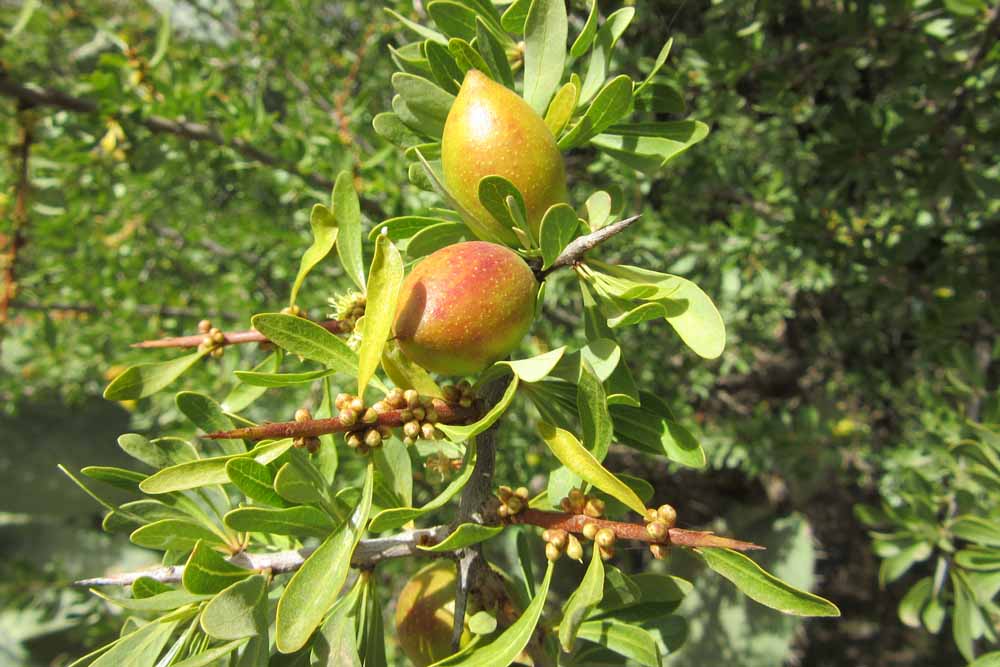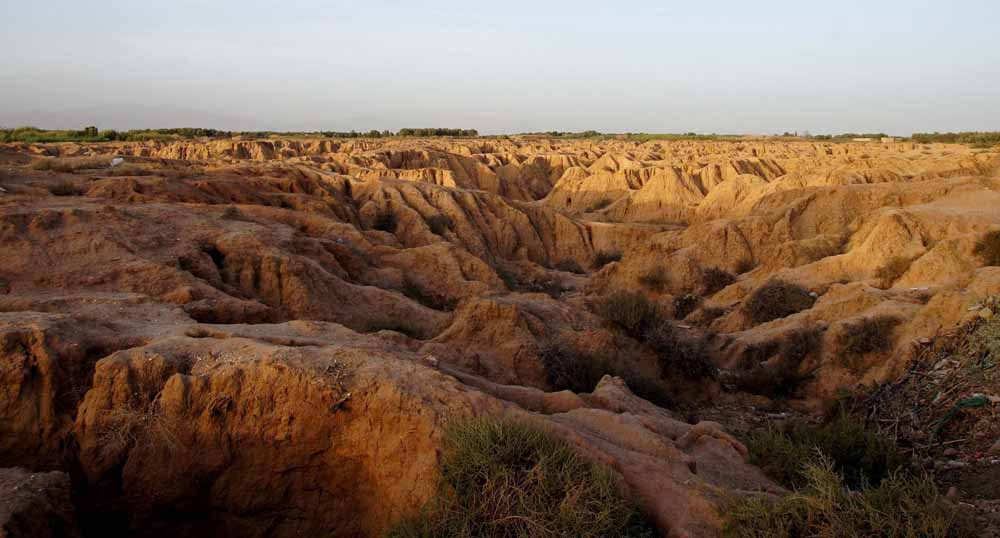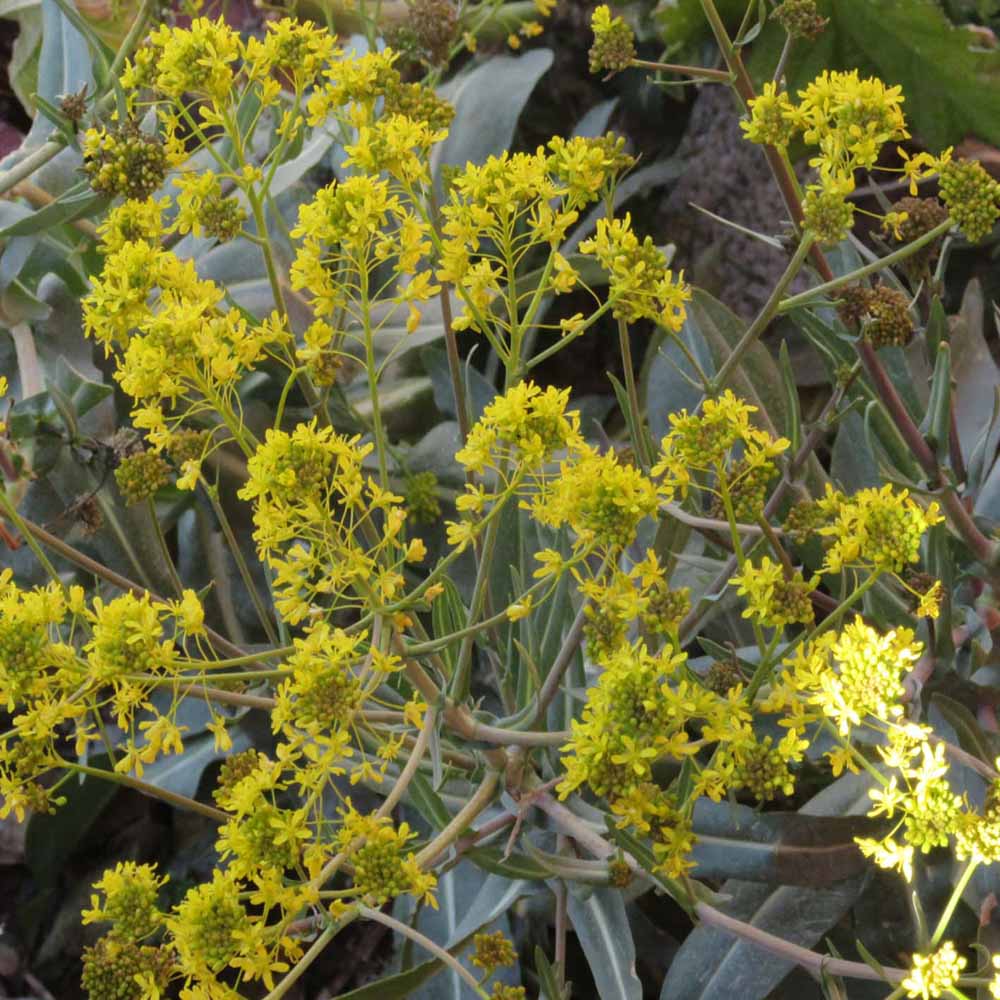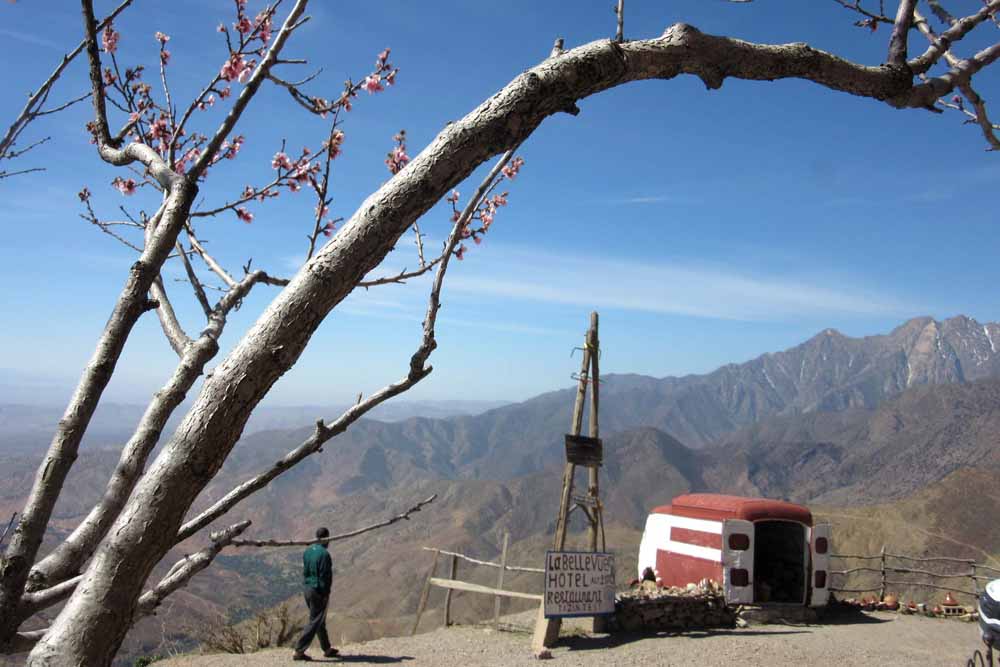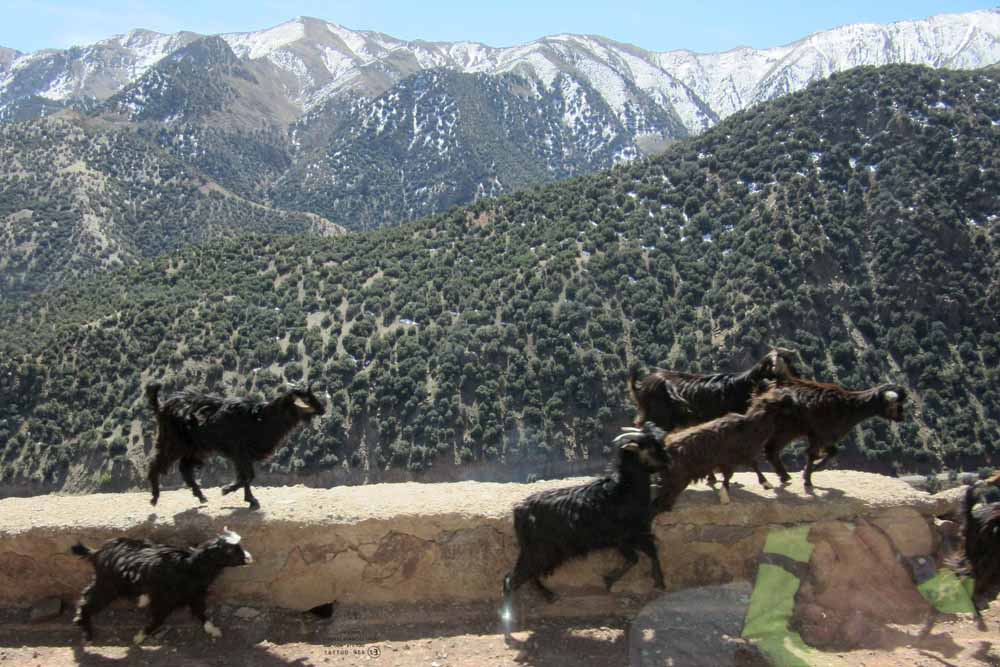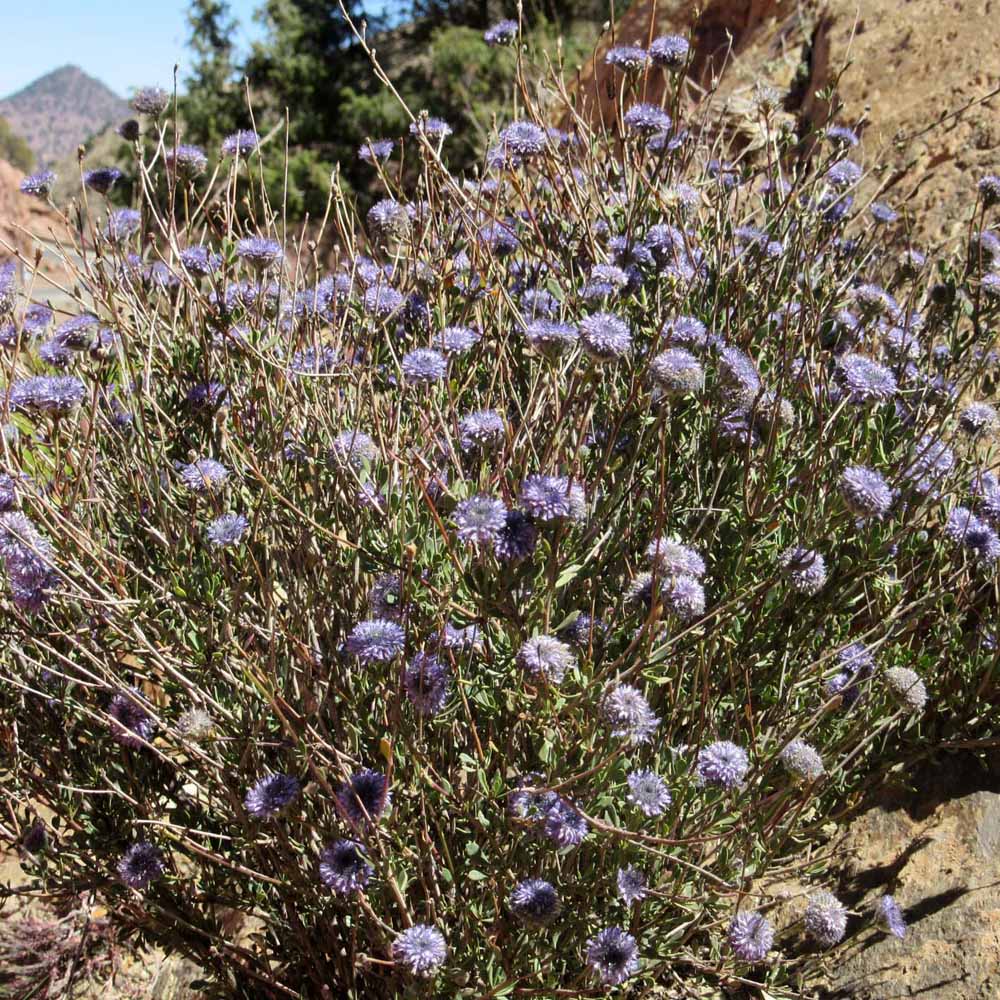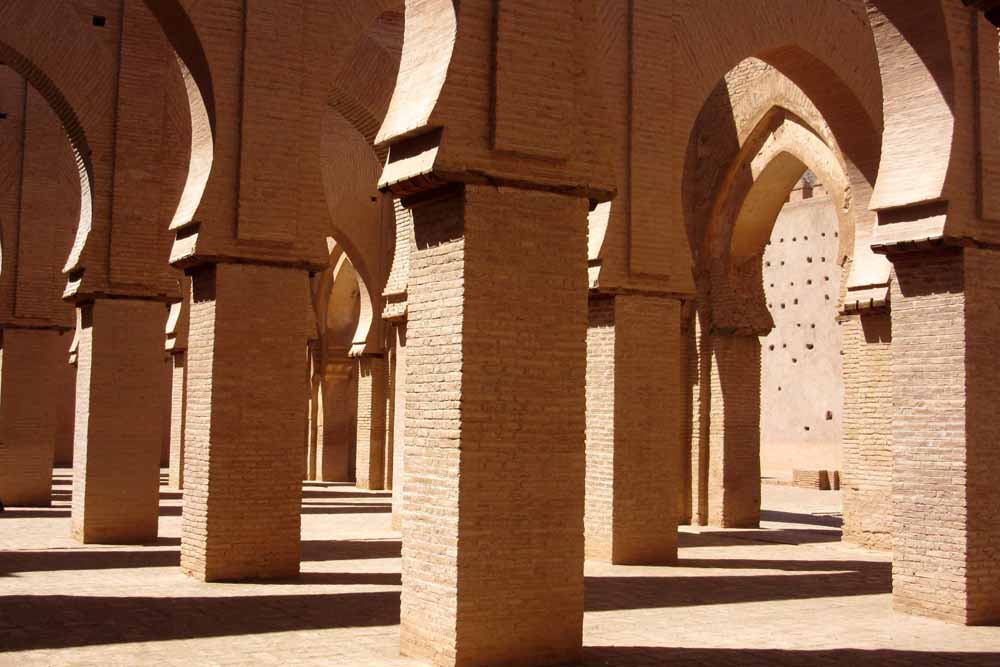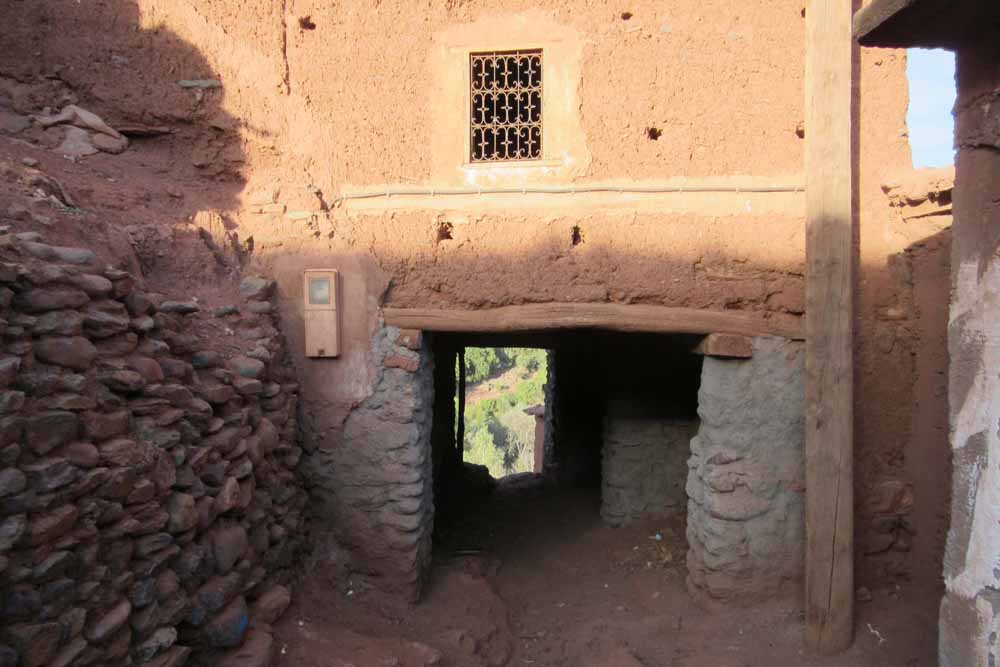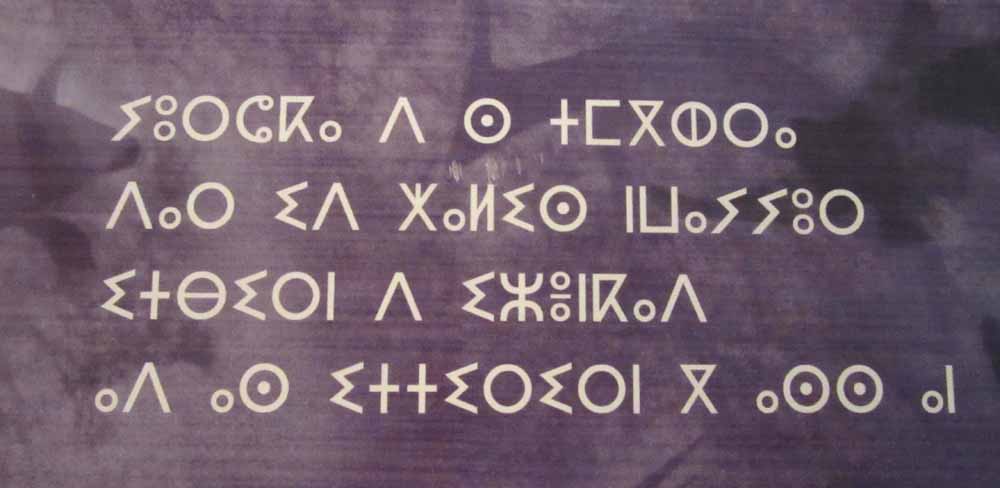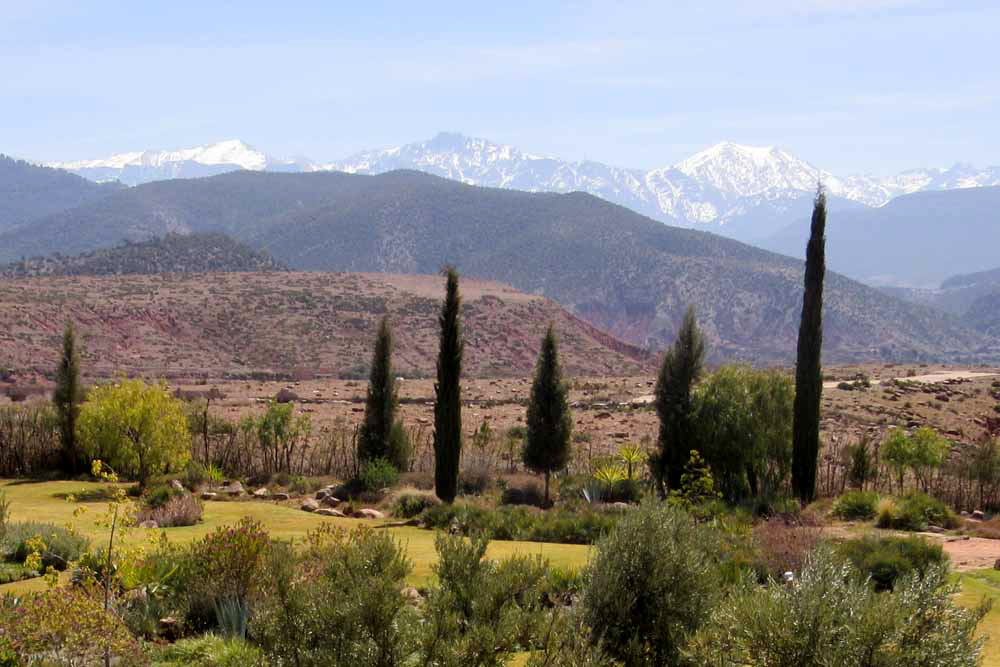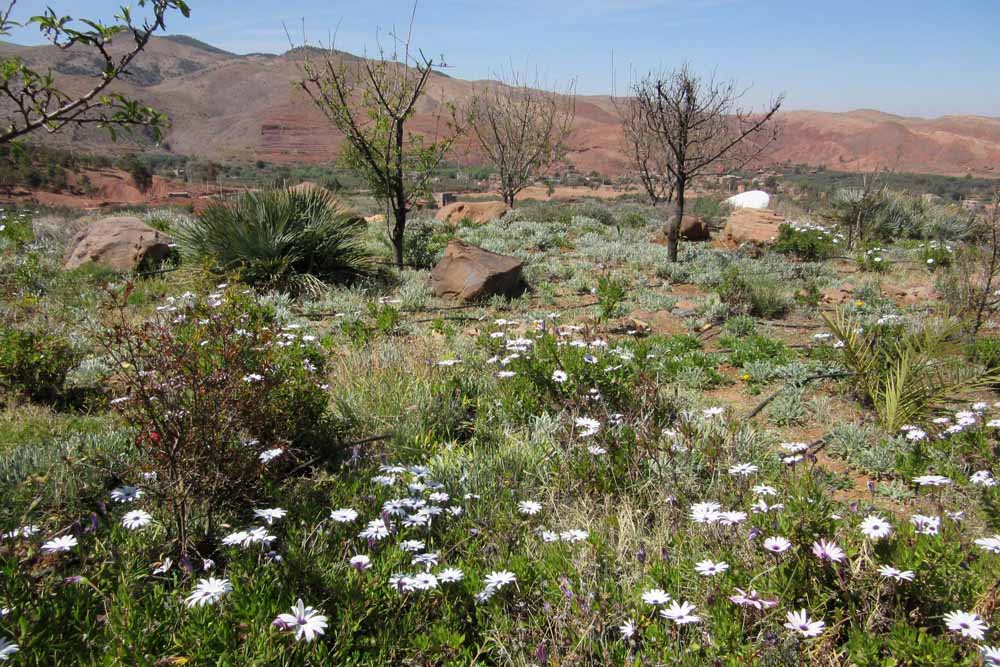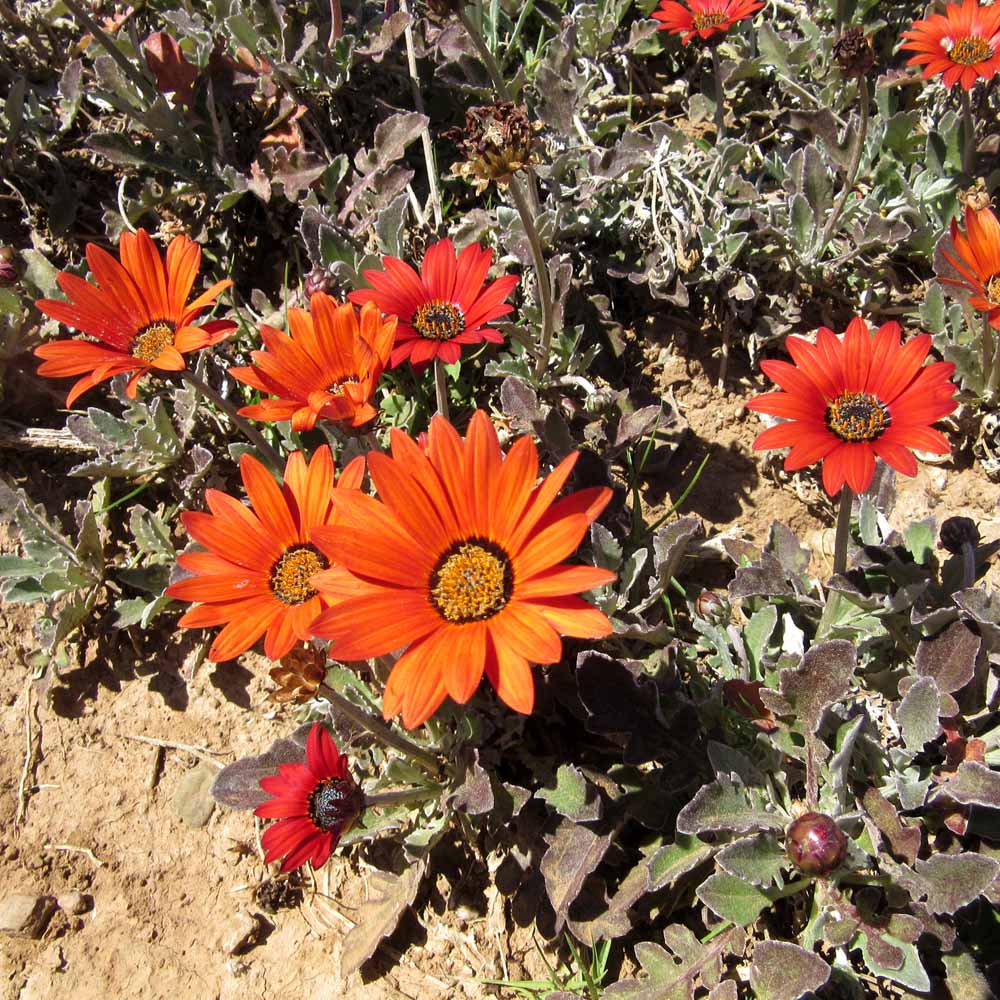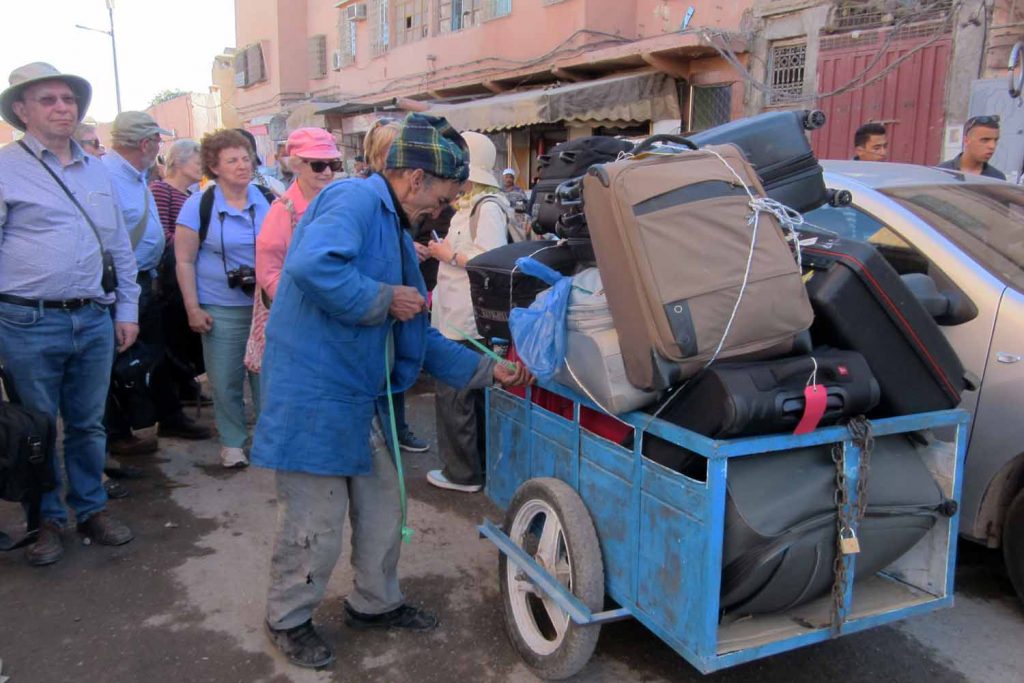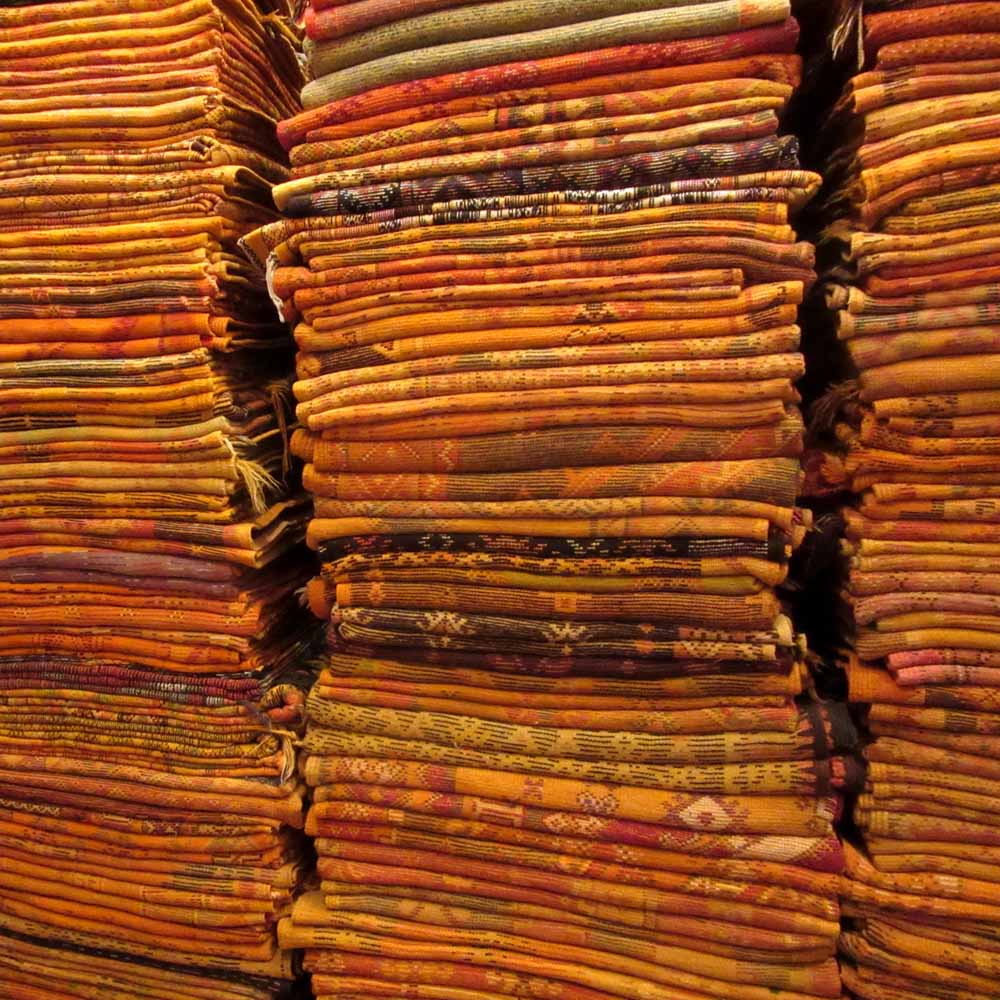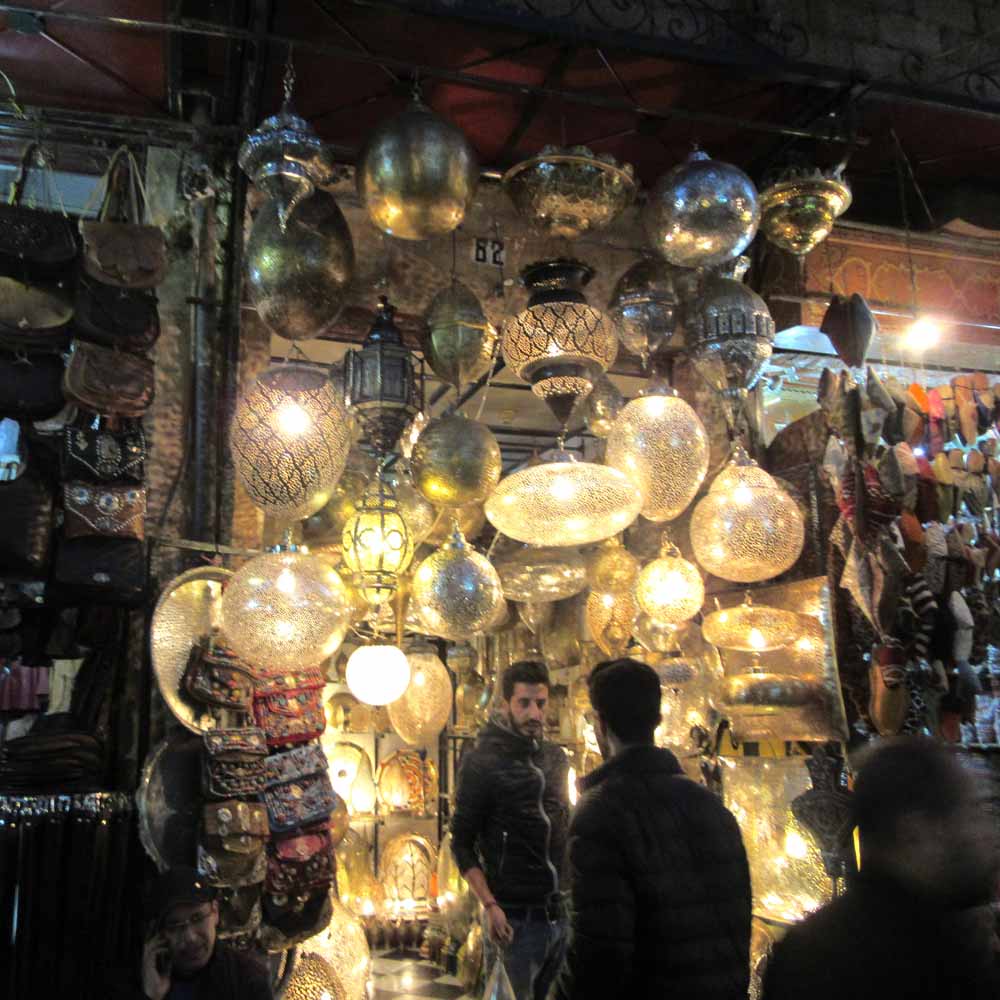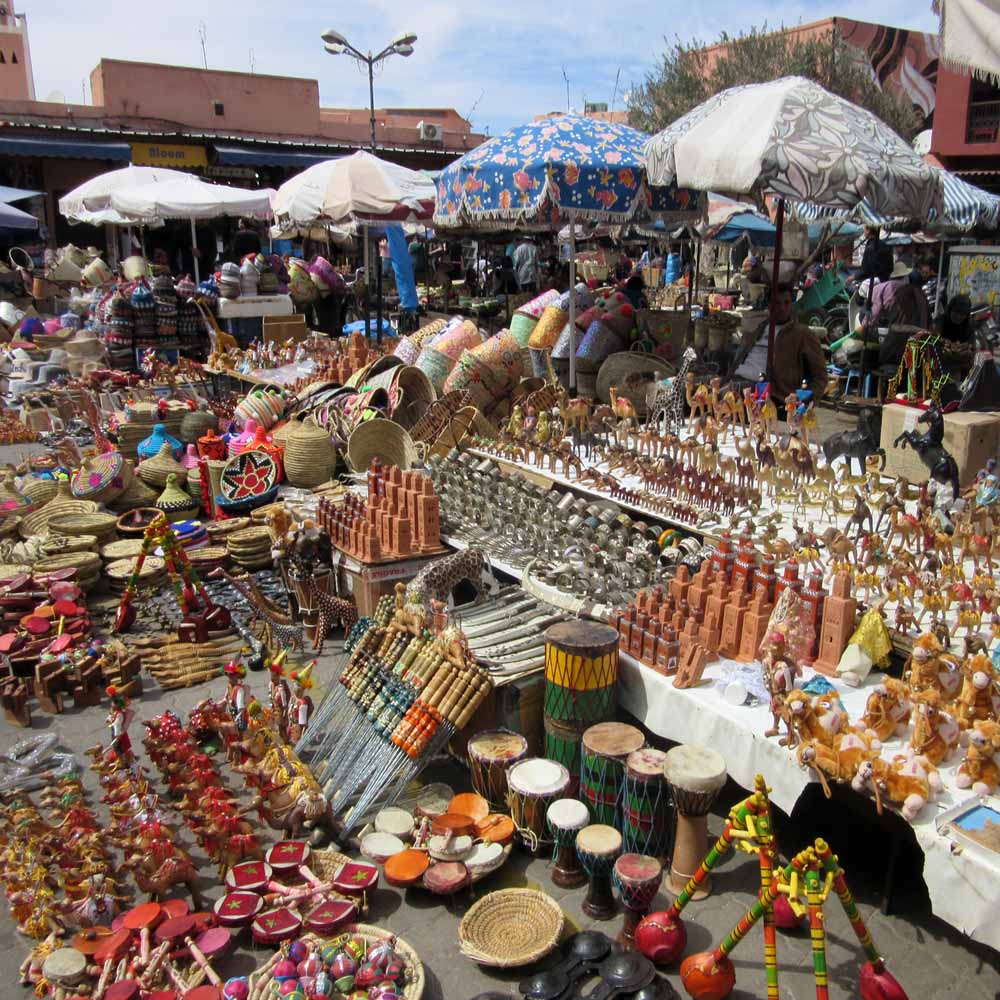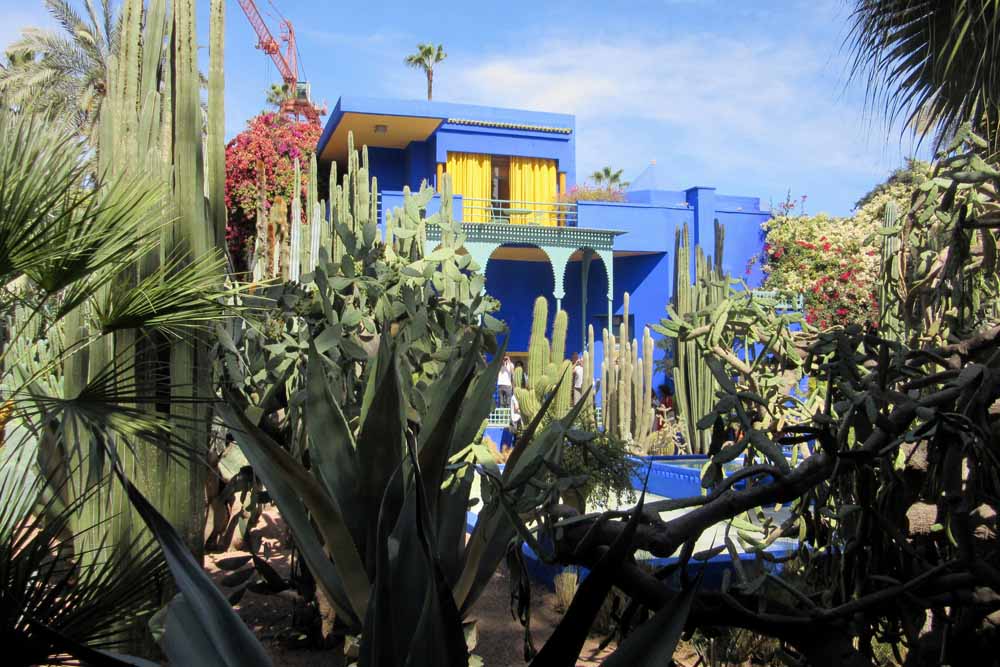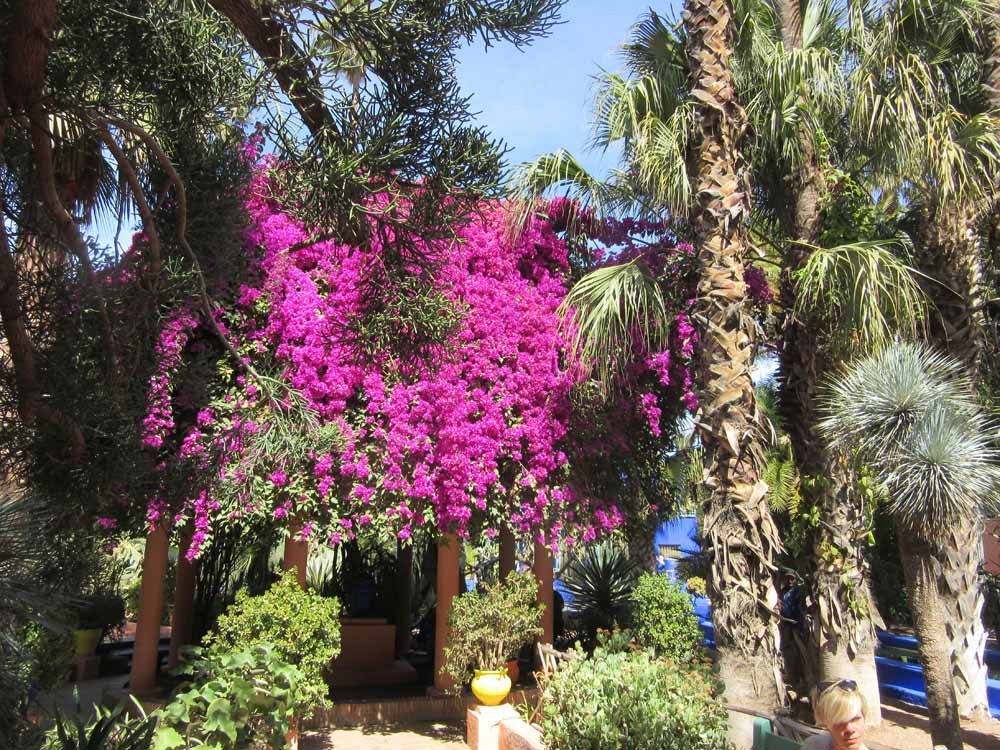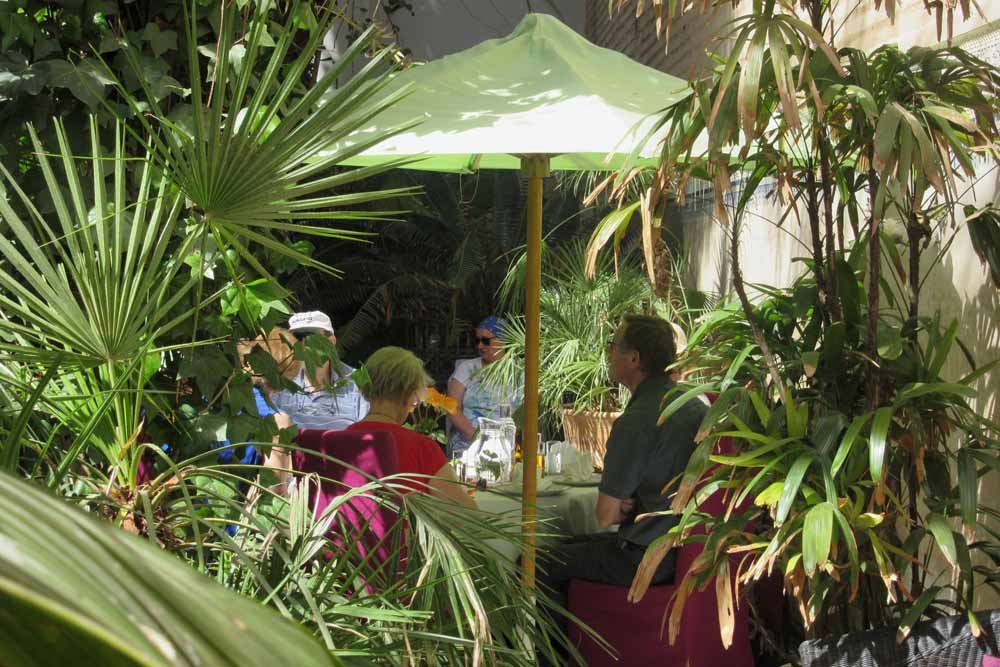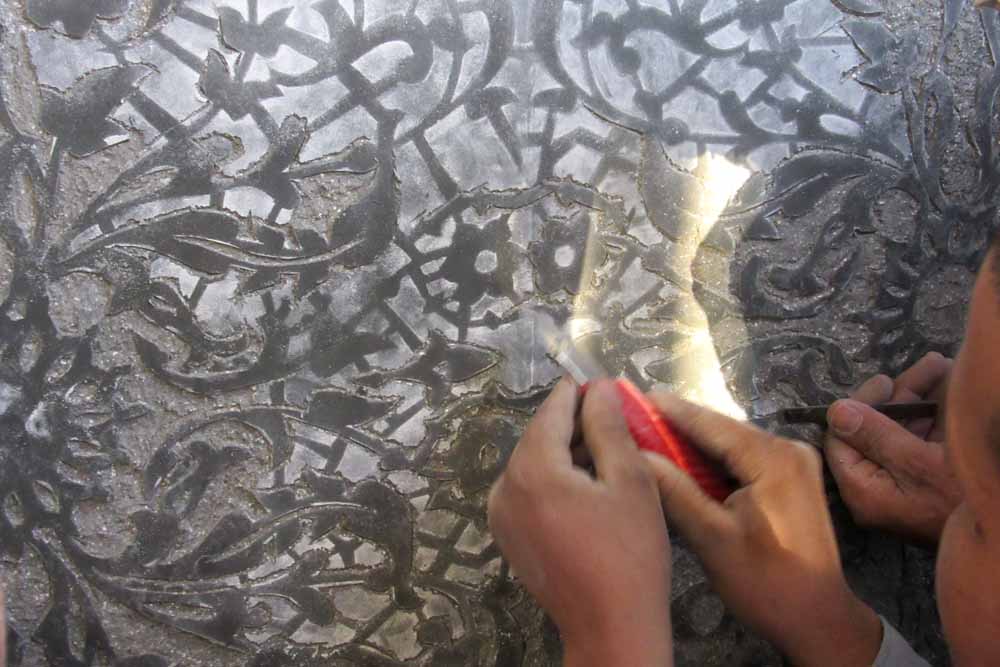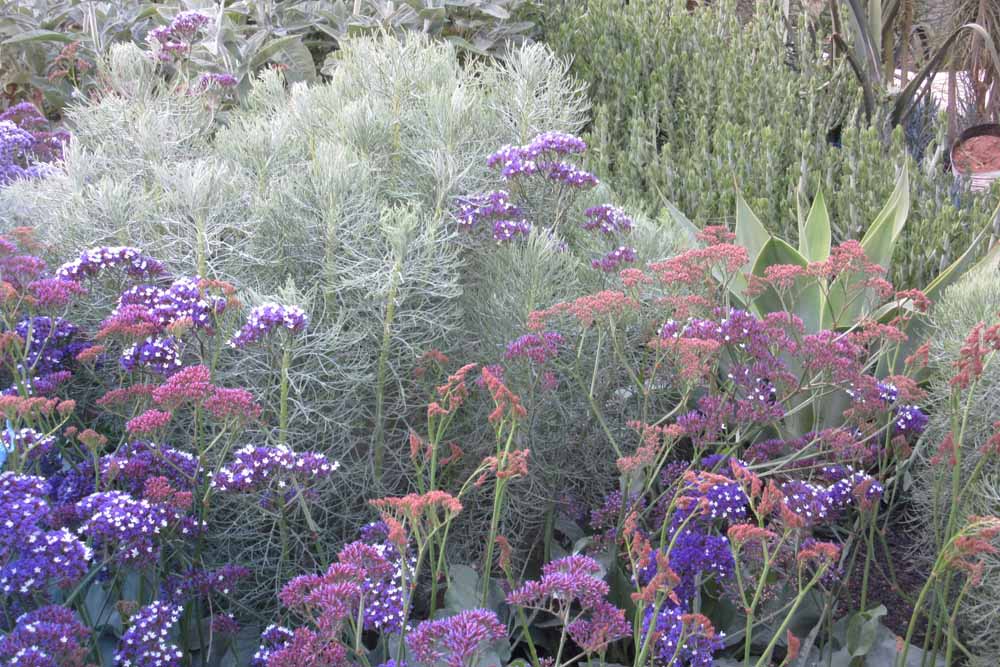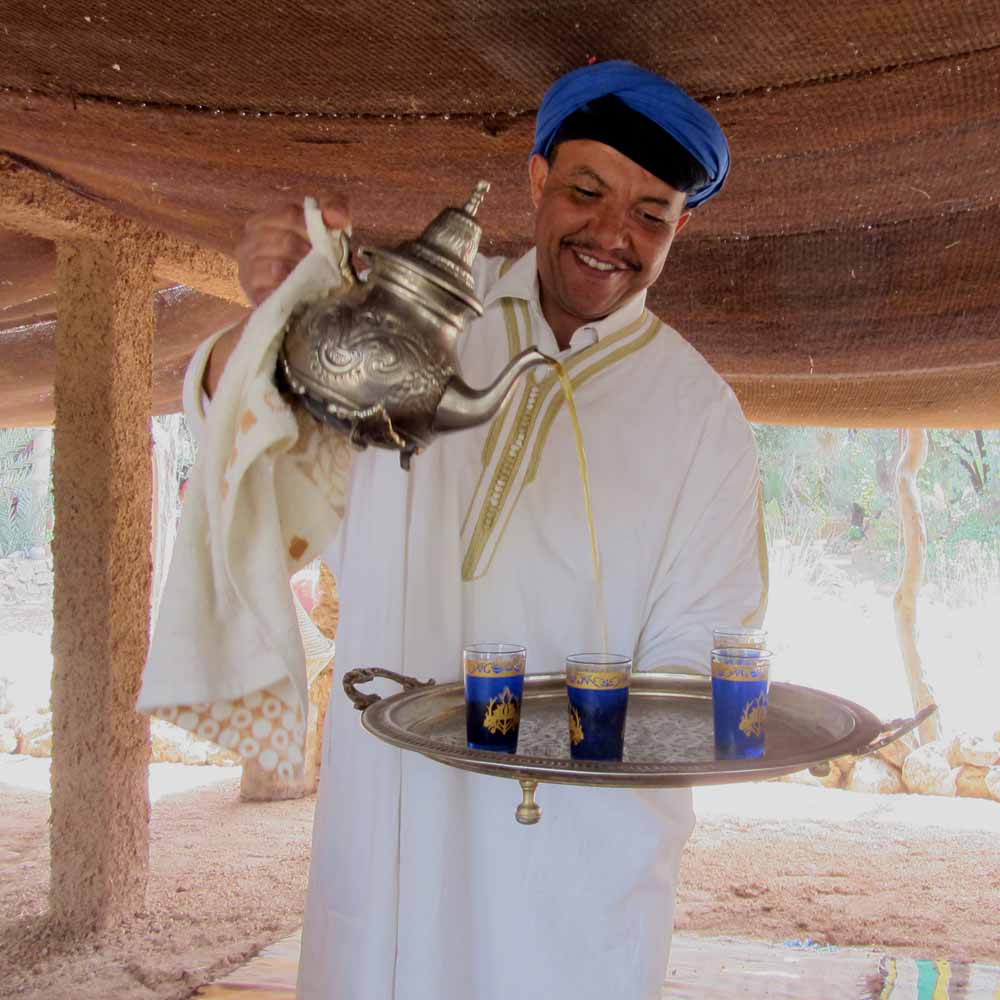Gardens of Southern Morocco
A Mediterranean Plants and Gardens Trip in March 2016
Click on an image to enlarge it / Cliquez sur une image pour l’agrandir
In March 2016 I joined an MPG trip, organised by Heather Martin, to visit gardens in southern Morocco. I last visited this area thirty years ago and remembered the quality of the light, the snow-capped mountains, the colours of the earth echoed in the materials used for clothing and floor coverings, and of course, the delicious food. But I hadn’t ever visited any Moroccan gardens, so this was a great opportunity.
The experience was even better than I had hoped. All the good things I remembered were still there, but in addition, the people seemed more relaxed and comfortable with foreign tourists than thirty years ago and were happy to engage in conversation. Everywhere, even in the souks of Marrakesh, we were met with friendly smiles and were able to wander at will without being pestered to buy.
For the first part of the tour we were based near Taroudant, a walled city in the Souk valley. Our hotel, Dar al Hossoun, was a delight. Its gardens, laid out by French landscape designers Eric Ossart and Arnaud Maurières in 2005, have matured beautifully. Heather’s garden notes describe it thus: “The gardens contain a huge variety of plants collected from around the world, cacti, succulents, palms, papayas, bananas, typically Mediterranean plants like euphorbias, plumbago and bougainvillea, wild grasses and roses, as well as cats, dogs, peacocks, tortoises, chameleons, birds and sometimes noisy frogs.”
Like most of Eric and Arnaud’s gardens, the design is geometric, with enclosed courtyards, rammed earth walls, garden rooms and different levels. A roof terrace provides views of the High Atlas, a sunken garden supplies unexpected cool and shade. The signature long narrow pool, which we were to see again and again, in this garden is lined with lush vegetation. I very much admired the use of texture, and the way spiky succulents and rigid palm leaves were combined with soft foliage.
We were to see quite a number of Eric and Arnaud’s gardens over the next few days, each one styled and planted to reflect the needs of the different owners, but Dar al Hossoun, originally created in 2009 for a customer who then decided he didn’t want it, became their home. Here they could experiment at will, eventually including around 900 different plant varieties, and for me, it was perfection.
The Taroudant area gets only 200-300 millimetres of rain per year, so water for the garden comes from a combination of spring water, melt water from the snow on the High Atlas and grey water from the hotel.
Here are some of the plants we admired:
The many peacocks continually made their presence felt. On our first morning I woke up wondering what was making a noise on the roof of my room…
Over the next few days we visited several more gardens and roof terraces, many designed by Ossart and Maurières. The owner of Dar al Hossoun, Ollivier Verra, seemed to have the keys to every lovely garden in the Taroudant area and he acted as our guide.
Passionate about plants, he whisked us off to peep into holiday homes awaiting their summer guests, to town houses full of plants in pots and to meet local residents happy to exchange ideas with other garden enthusiasts. In some of the gardens Olliver proudly pointed out plants that had been created from cuttings and seed from Dar al Hossoun.
Some interesting plants:
A rather special visit was to the palace and estate owned, until his death in 2011, by Claudio Bravo, the Chilean painter. The palace is now maintained as a museum and the 150 hectares of land are used to grow citrus trees. Constructed only 14 years ago, on a grand scale, the palace and gardens are clearly meant to impress, from the massive towers flanking the entrance door to the vast pool with views to the High Atlas.
Inside the walls, courtyards with pools and fountains opened up and we were led through a series of rooms laid out to display the painter’s art and his amazing of collection of 15/16th century Ottoman crystal.
Because of its scale, this garden had a very different feel from others we had so far visited. On all sides, citrus trees stretched as far as the eye could see. The driveways had been enhanced by sculptures and massed plantings of grasses, giving a very contemporary feeling.
Then around the corner, I was transported to Moghul India by the sight of an Islamic style pavilion overlooking an enormous pool, stretching away towards the mountains beyond.
Whilst in Taroudant we were also able to have an insight into the lives of local people through visits to markets, Berber villages, an oasis and an argan oil cooperative.
The market was bustling and lively, with all manner of interesting things for sale, including local produce and spices, livestock of all types, re-cycled tools, household goods, local pots, bales of hay…
The argan tree, Argania spinosa, is endemic to the Sous valley in Morocco and the Tindouf region of Algeria.
We drove through a semi-desert landscape dotted with argan trees, shared only with the occasional flock of goats, which climb nimbly into these inhospitable trees to munch on the fruits.
Amidst this semi-desert, the Tiout oasis is a lovely fresh green space with fields enclosed by date palms, Phoenix dactylifera. The fields are flooded once every three weeks to enable the growing of crops.
On our way home from this outing we stopped at sundown to enjoy the evening light on some canyons carved by flood waters.
Guy Cheeseman took this atmospheric photo, and one of your usual photographer returning from duty.
After five nights in Taroudant we thanked the wonderful staff at Dar al Hossoun and got on our buses for the much anticipated journey north over the Tizi n’Test pass. The narrow road was constructed between 1926 and 1932 to link Marrakesh with the Sous valley and the desert beyond, and reaches 2,093 metres.
As we climbed, the vegetation changed from argan trees in the valley, to Pinus halepensis on the lower slopes, then Quercus ilex appearing as we approached 2000m. Apart from this, there were very few plants on the southern side of the pass, but we did spot Calendula suffruticosa and Isatis tinctoria (woad).
On the northern side of the pass there was snow, thicker vegetation (Quercus ilex, Juniperus oxycedrus, Nerium oleander) and many goats.
A botanising stop to look at Cupressus atlanticus, a rare endemic tree, also provided sightings of Globularia alypum, Lavandula dentata and the exotically coloured Polygala balansae.
Next a visit to the atmospheric Tinmel mosque, founded in 1153 and restored in 1994. It is roofless, and not used for prayer, so open to non-Muslims.
We arrived at La Roseraie, our overnight stop, in time for lunch followed by a walk. The path took us first through olive groves, then across dry rocky hills covered in a poor, dark red soil, to a river crossing.
On the other side the locals had created canals to irrigate their allotments and the difficult-to-find trail took us through Berber villages and eventually, after many stops to check the way with friendly schoolboys, back to La Roseraie.
The following morning we were off again, continuing north towards Marrakesh. After a few botanising stops we arrived at the Toubkal Ecomuseum which explains about the work being done to protect the flora and fauna of the Toubkal region for the benefit of the local population and visitors.
We learned that this region has 540 plant species, of which 135 are endemic to Morocco. Everything was explained in French, English and Arabic and occasionally Berber (or Amazigh) which became recognised as an official language of Morocco in 2011. This Amazigh poem was displayed to demonstrate Berber script:
Marriage at Adarn’Dern
He has come for the wedding
To the family of the moon
The doves and the gazelles
Have danced with him.
Noces à Adrarn’Dern
Il est venu pour le mariage
Chez les proches de la lune.
Les colombes et les gazelles
Ont dansé avec lui.
Our next stop was Kasbah Angour, in Tahanaout. This beautiful hotel in extensive gardens was created ten years ago, by its British owner. Having no experience in gardening, he looked around to see what looked good in other people’s gardens and took photographs.
He then went along to a local nursery and asked for the plants he had seen. His objective was for the hotel grounds to blend in with the landscape, and apart from a surprisingly large area of mown grass, he has been successful.
Plants adding colour were Euphorbia splendens, Polygala myrtifolia, Gazania rigens, Teucrium fruticans and Felicia amelloides.
Later that afternoon, our minibuses disgorged the 24 of us, and our luggage, into the hubbub of the medina of Marrakesh.
Arriving in Marrakesh in the late afternoon we separated into small groups to follow our luggage carts through the twisting streets and alleyways of the medina. We scuttled over cobbles and puddles and through road works, dodging motorised, animal and human powered traffic. At times we had to pause while our luggage was re-attached to its trolley.
Once established in our various riads, we plunged into the streets once more to explore the souks and squares and take in the colourful and noisy scene.
The following day it was back to gardens – La Majorelle, Villa Enija and Le Jardin Secret. The first is the most famous and on every tourist’s visit list. Jacques Majorelle, a French orientalist painter, visited Morocco in 1917, was seduced by Marrakesh, and in 1923 bought a palm grove, in which he had an artist’s studio built, its outside walls painted ‘Majorelle Blue’. Around this he created a garden, composed of exotic species collected during his worldwide travels. The garden was opened to the public in 1947, but after his death in 1962 it became neglected. In 1980, La Majorelle was bought by Yves Saint Laurent and Pierre Bergé. They restored the garden, adding many new plants, and converted the artist’s studio into a museum of Berber culture.
We entered the garden through a classic Moorish style courtyard, then had to decide whether to turn left to the bamboo forest or right to the cactus garden. Everything here is stylish, with walls and pots painted Majorelle blue, or very occasionally bright yellow, but garden benches, of which there are many, painted sludgy green, so that they disappear into the foliage. The cactus garden is full of mature specimens from all over the world, mostly a glaucous blue-grey, but varying in form and texture. Water is present in a long pool and a large bassin, both reflecting the surrounding palms and the blue of the sky. There are very few flowering plants, a bougainvillea, limonium in pots, a brugmansia – but everywhere, through the foliage, one glimpses bright Majorelle blue.
From the contemporary we moved on to the classic – lunch in the courtyard of Villa Enija, a 19th century silk merchant’s palace, now converted into a luxurious riad.
The square courtyard, with original blue and white tiles, had a central fountain, palm trees and a jungle of large plants in pots.
The final garden, Le Jardin Secret, designed by Tom Stuart Smith, was a work in progress – very much so, as we were visiting three days before its grand opening, so were very lucky to be allowed in.
In fact, the garden was largely finished, apart from positioning the plant labels, but the entrance pavilion was thronged with Moroccan craftsmen, carefully carving out an intricate wall decoration from a stencilled pattern.
The garden of this palace, the 19th century residence of the governor of the medina, consists of two walled courtyards. In the smaller of the two, Tom Stuart-Smith has created a romantic interpretation of a Moroccan garden, full of flowers and soft colour.
The larger space includes a traditional citrus grove, but with a contemporary underplanting of Stipa tenuissima, lavender and tulbaghia.
On our final evening in Morocco, a few of us enjoyed a glass of wine on the rooftop terrace of the Café Arabe in Marrakesh and took time to reflect on all we had seen and done.
On one side were views of the hurly burly of the city, a reminder of the vibrancy and energy of the people we had met, on the other, the majestic High Atlas which had been ever present. Two perfect images with which to end our trip.
Text: Christine Daniels
Photographs: Christine Daniels & Guy Cheeseman
![]()


